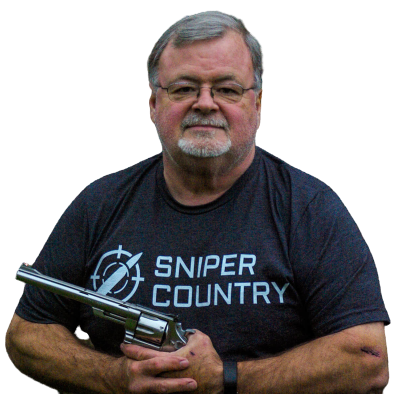In this Article:
What — a lightweight snubby in .357? Wow! That would be handful! I can hear the comments flowing from all you revolver shooters out there. And, these comments are not without merit. I have shot snub-nosed revolvers before, in calibers from .22 LR to .357 and it certainly can be a handful. A lot of folks who carry a short-barreled .357 will make sure that the gun’s frame is made of steel, not polymer. That does help to soak up recoil to a certain extent. I recently shot a S&W model 60 in .357 at a church “guy’s night out” at a local range. (That was fun, to be sure!). I somewhat apprehensively put several rounds downrange and then noticed that my shooting hand was still attached to my wrist. It wasn’t that bad. But, that was a steel-framed gun…read below about my experience shooting this poly-framed Ruger.
.38 Special +P?
OK. We have a gun chambered in .357 Magnum, so we load it with .38 Special +P ammo. Huh? Let’s face it — the +P rounds should be as effective as those .357 loads in a short barrel, right? Not necessarily. I recently watched a YouTube video by Paul Harrell. This guy seems to know what he’s doing. He’s former military and has many videos that have him shooting into his “patented meat target” or words to that effect – you’ll see what he’s talking about if you watch any of his videos. At any rate, even out of a short barrel, the .357 was still ahead of the .38 +P rounds in terms of velocity and energy during his test of the two calibers – there is one specific video that compares the two calibers. You can see it here. It is interesting viewing if you carry a small revolver for self-defense.
The LCRx
First, let’s define LCRx. It stands for Light Carry Revolver, external hammer. Previous LCRs had an enclosed hammer but there are now nine different models with the exposed hammer in calibers .22 LR, .22 Magnum, .327 Federal Mag, 9mm, .38 Spl. and .357 Magnum that cost either $579 or $669 MSRP. If you want the enclosed-hammer version, there are six models plus one dealer exclusive that are in the same calibers and at the same prices as above. All guns have either a 1.87″ or 3″ barrel. Only the LCRx models have the longer tube — there are four of them.
That’s the breakdown, fresh from the Ruger website. It is current as of this writing. Looks like, to me, that no matter what you are looking for in a snubby, Ruger most likely has it covered. They have obviously stuck with the 1.87″ barrel length that S&W made popular in its line of J-frame snubbies. Taurus and other makers put a 2″ tube on their snubbies. The minor length discrepancy makes no practical difference in handling or shooting these little guns. The difference is felt when you move to a 3″ barrel. It does tend to handle a bit differently, plus it give you just a bit longer sight radius. As far as velocity goes, I can’t really see it making that much difference but when I shoot this, I’ll make sure to shoot some .38 Spl. loads. I’ll report below what I find. I own both the Taurus 85 and a S&W 638 J-frame.
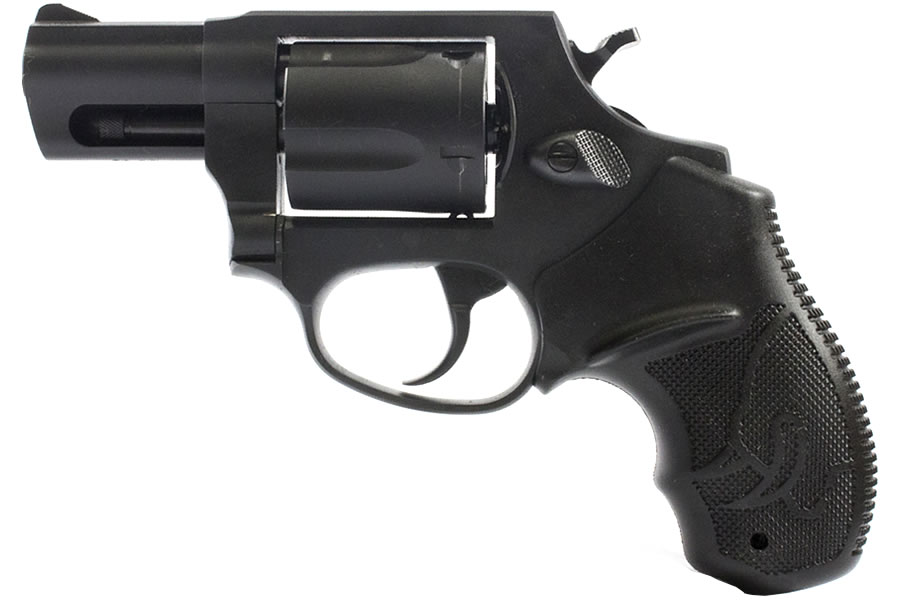
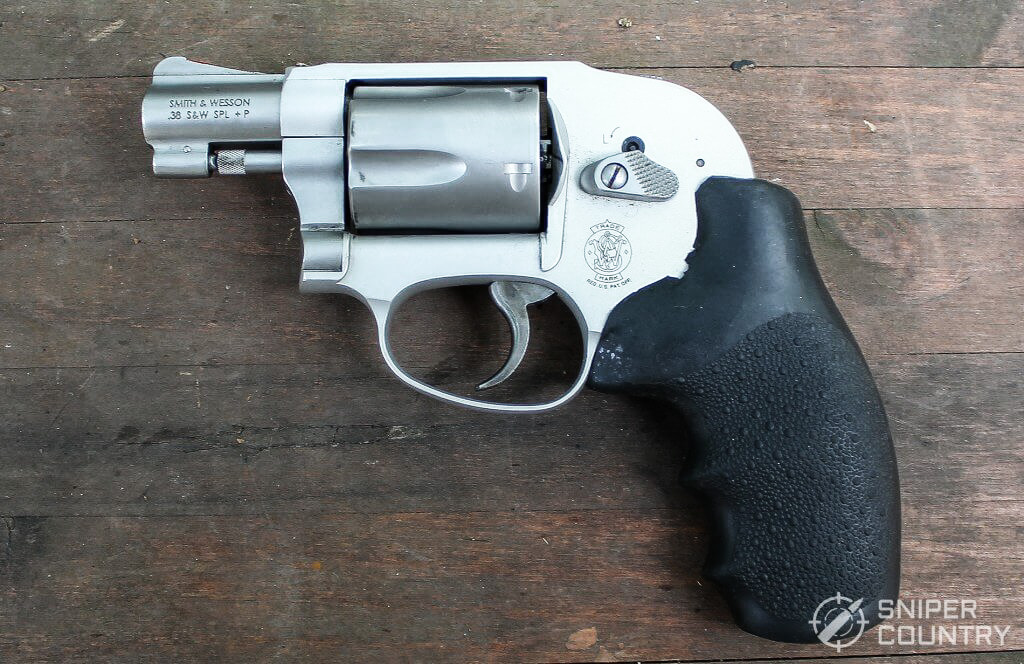
For some reason, the Taurus shows greater velocity with a given load than does the 638. I sincerely doubt that it’s because the Taurus barrel is .13″ longer than the Smith’s… sometimes similar guns just clock faster or slower velocities when compared to each other when they are chronographed. That’s the way it is.
To Hammer Or Not to Hammer?
Why would Ruger bring out a gun, actually four different guns, in the LCR line and put an exposed hammer on it? It’s the same reason that S&W makes different J-frames with and without an exposed hammer. My 638 is the best of both worlds, with a frame built up around the hammer that only exposes the very tip of it so that you can cock the gun for a single-action shot if needed but does not get snagged when you draw it since most of the hammer is hidden.
Another question is, why the three-inch barrel? I can only answer that by stating that three-inch revolvers are becoming more and more popular. They have always held a certain cachet with shooters…remember back to the 1873 Peacemaker Sheriff’s Model that had the 7.5-inch barrel bobbed to three inches, for better concealment. One of the big sellers for S&W is their 686 .357 Magnum with a three-inch barrel.
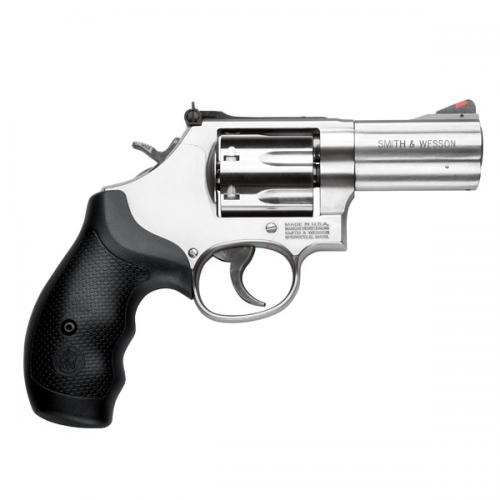
The 7-shot 686 Plus is popular, as are the Performance Center models that incorporate upward-angled muzzle vents in front of the front sight that helps keep the muzzle down on firing. The 686 mentioned goes for over $800 MSRP, and they sell all they can make. So, it only made sense for Ruger (who is no stranger to carry revolvers) to come out with a few three-inch-barrel guns in various calibers. They have long had steel-framed, three-inch guns but it really made news when they brought out polymer-framed guns with the three-inch barrel. The adjustable sight is just icing on the cake. I have long believed that you need to be able to adjust your gun’s sights to your load of choice and the old “trough-in-the-frame” rear snubby sight does not allow that with anything short of a Dremel tool (shudder) or file. Whether you want adjustable sights on your carry gun is your call — I just know how I feel.
Popular Articles
Photos
Let’s look, in a little more detail, at our test gun.
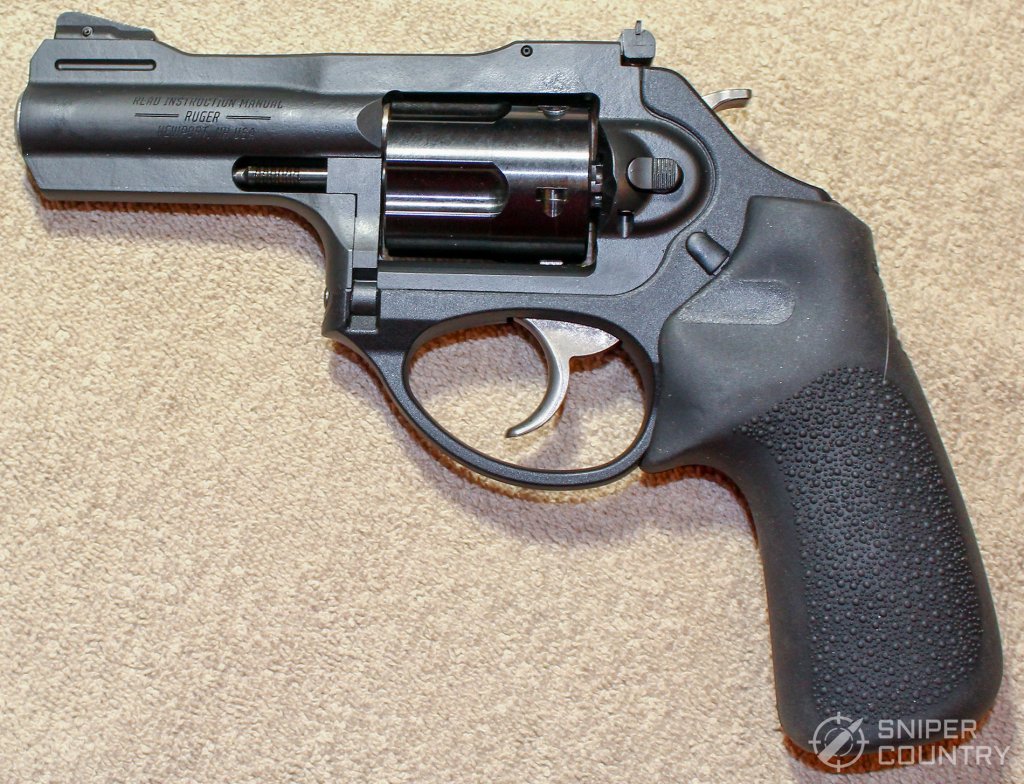
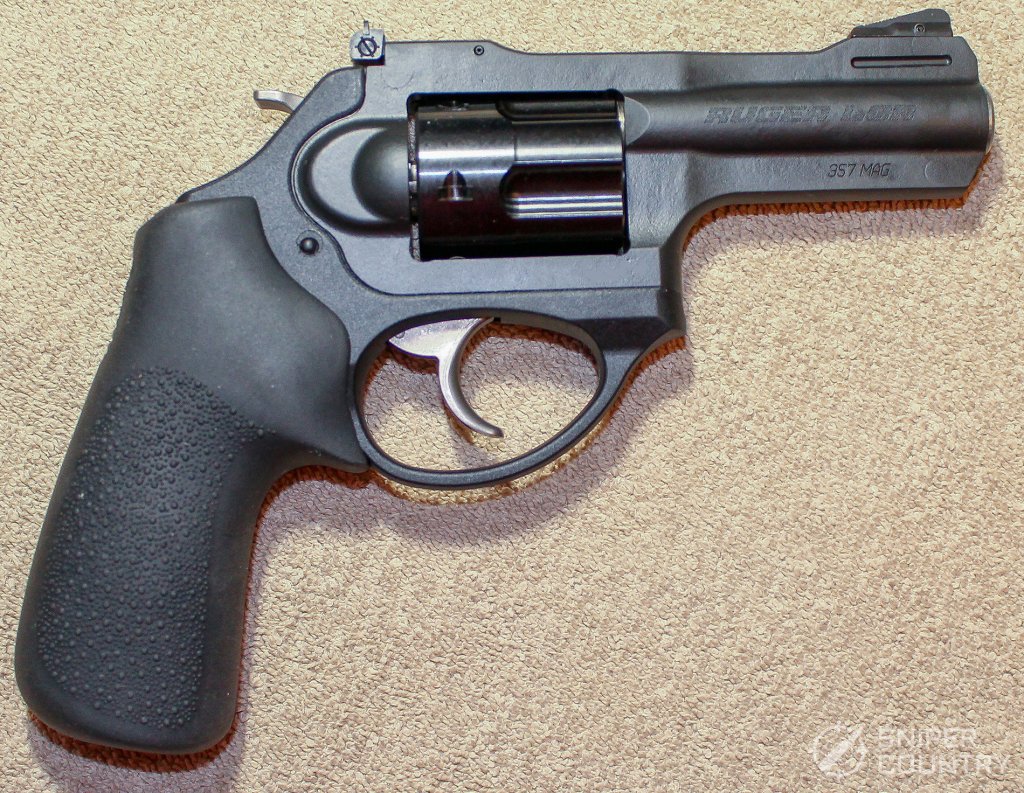
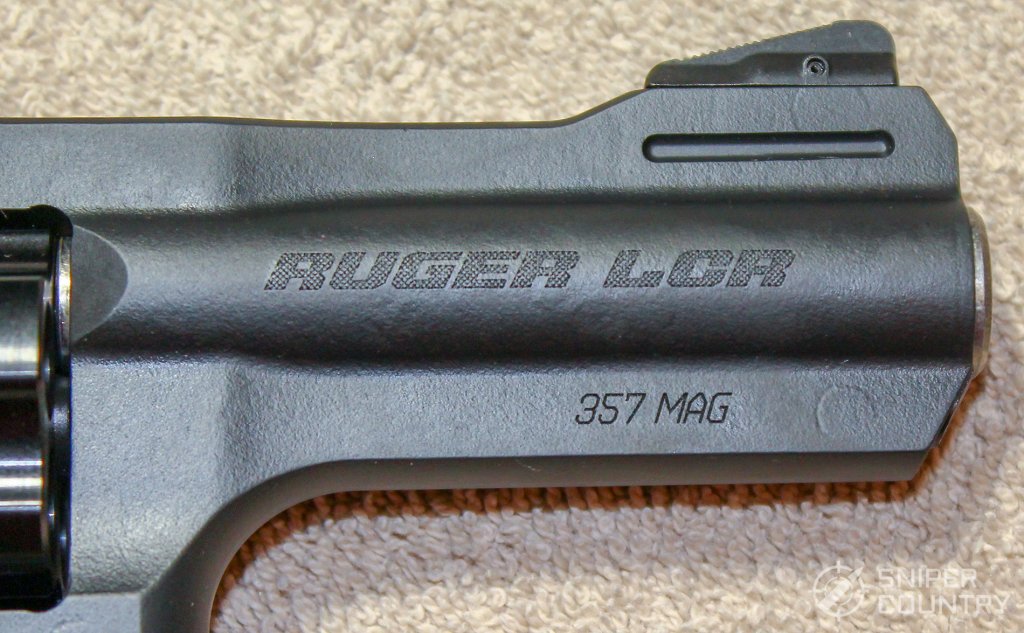

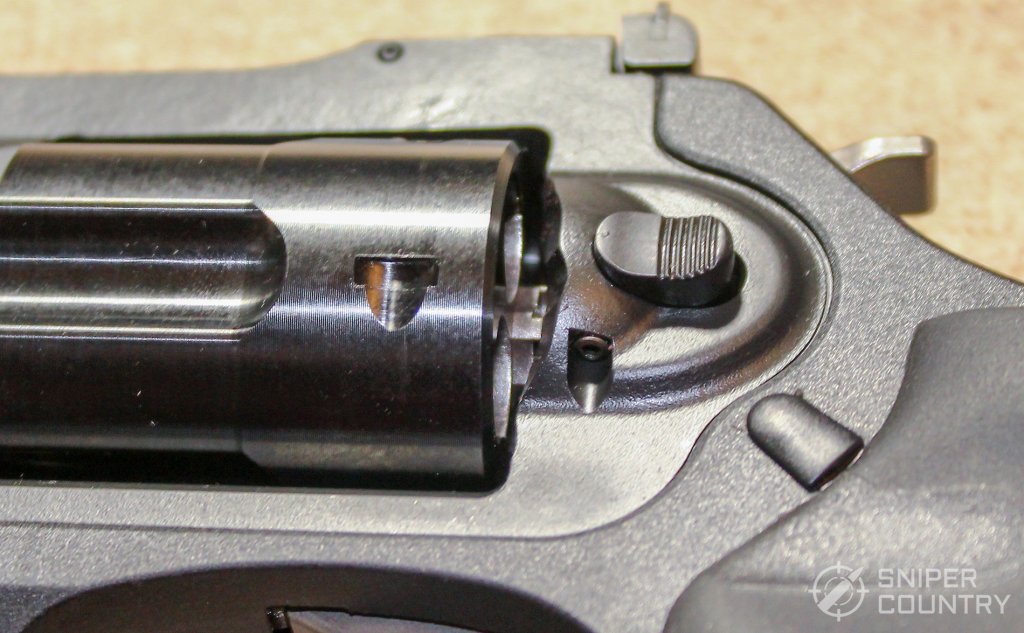
I like it. Also, a good shot of the heavily-fluted cylinder.
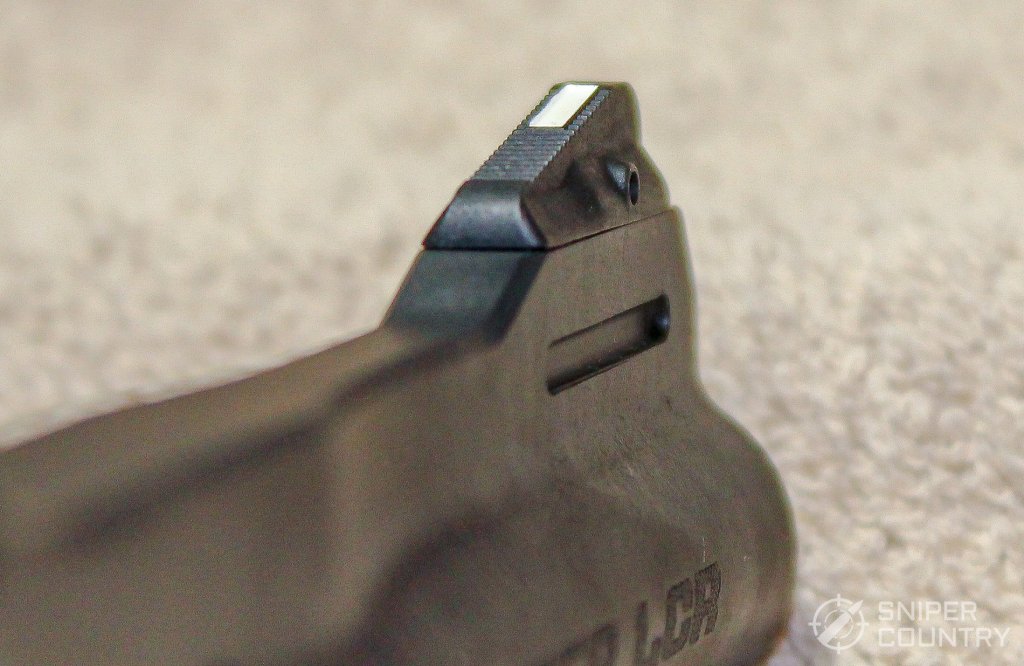
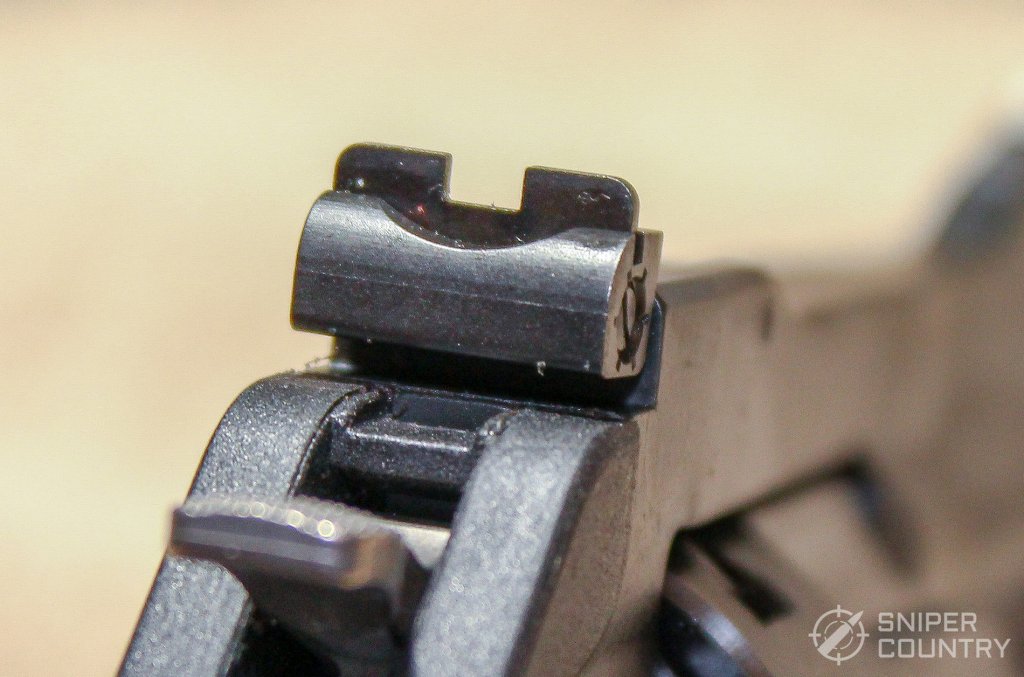
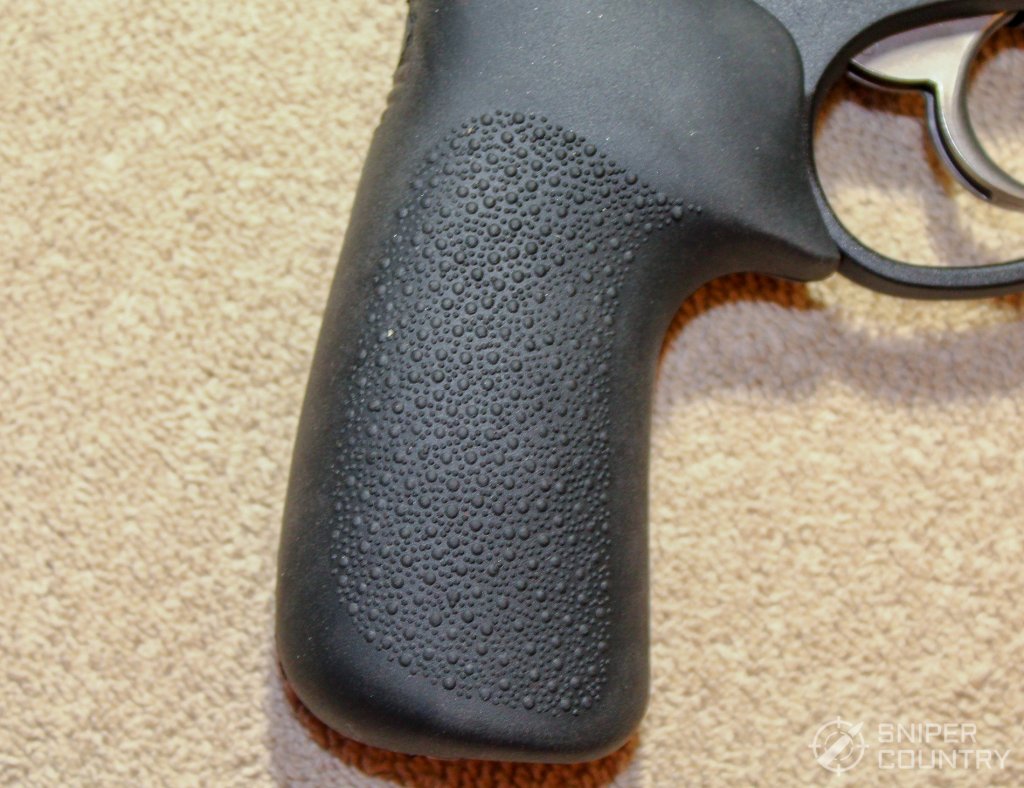
and who made it…
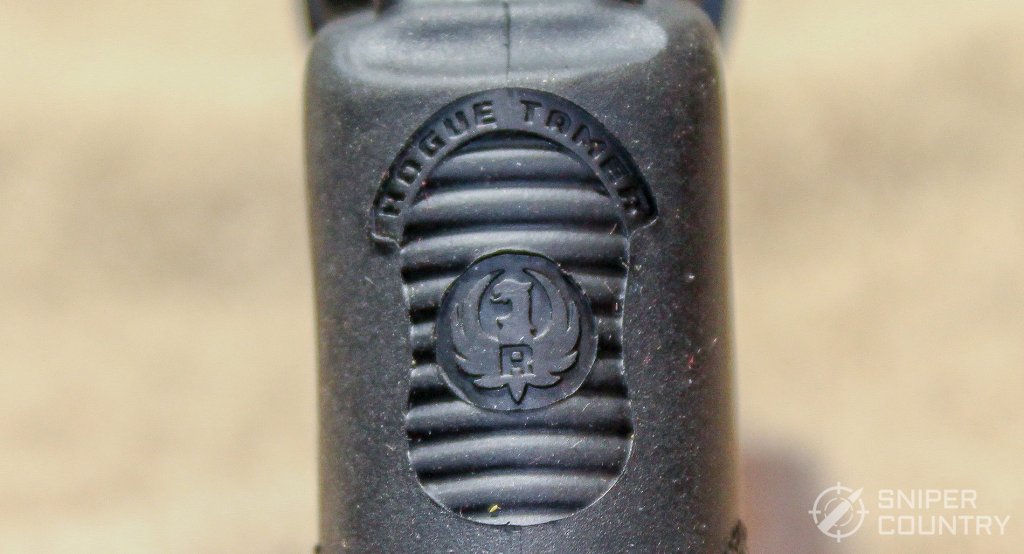
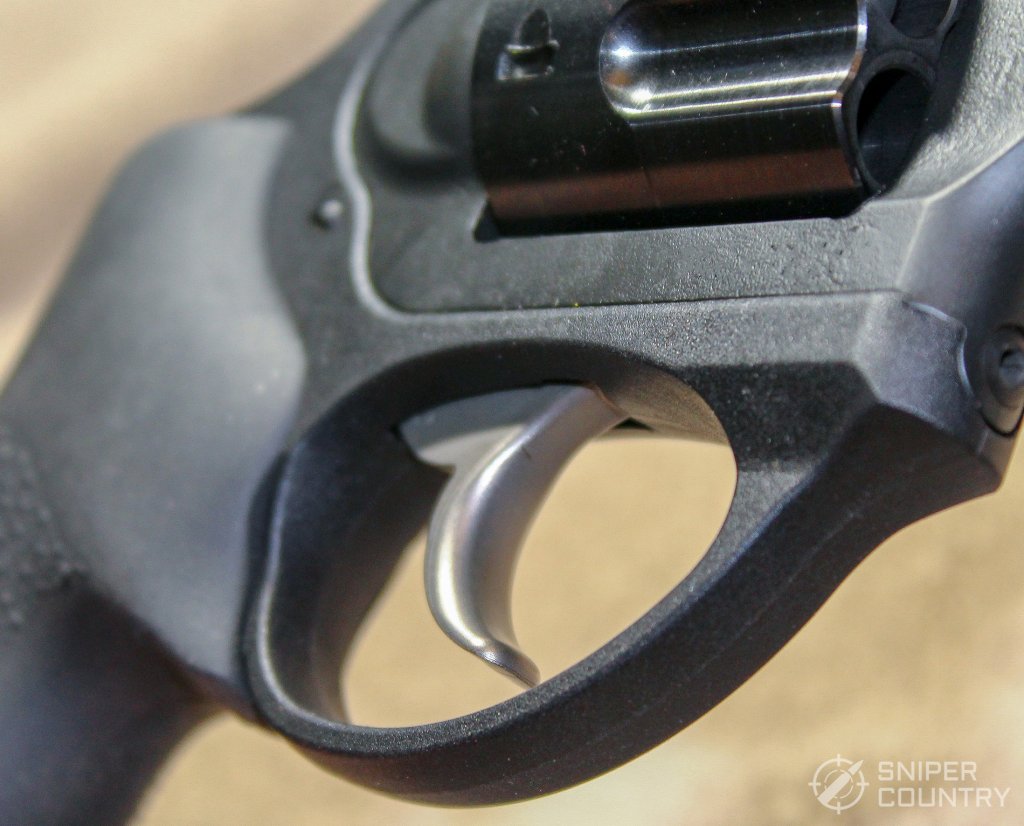
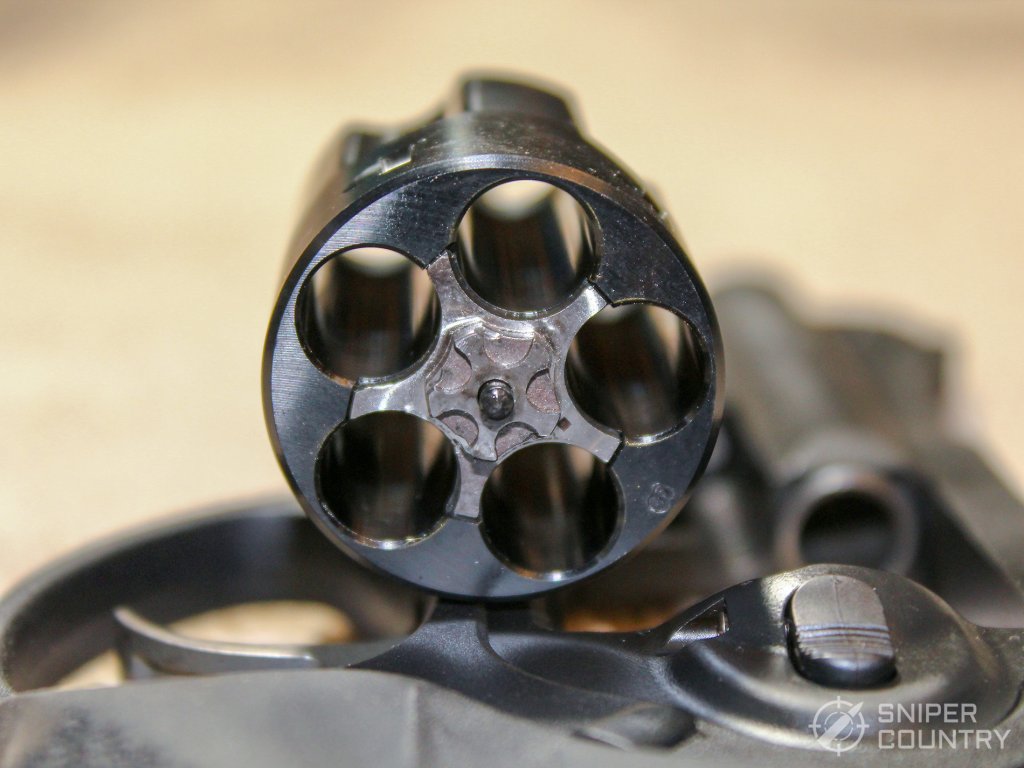
Specs
| Caliber: | .357 Magnum, .38 Spl., .38 Spl. +P |
| Length: | 7.5 inches |
| Height: | 5.8 inches |
| Weight: | 20.5 oz. empty, weighed on my scale |
| Barrel: | 3 inches, 6 grooves |
| Trigger Pull: | SA: 4 lbs, 4 oz.; DA, 9 lbs, 2 oz. (measured) |
| Capacity: | 5 rounds |
| Sights: | Fully-adjustable rear; replaceable pinned front with white bar |
| Grip: | Hogue Tamer Monogrip |
| Finish: | Matt black |
| Cylinder Finish: | PVD |
Carrying The LCR
How would you carry this gun? In a pocket? Unless you’re Captain Kangaroo (remember him, and Mr. Green Jeans?) with his outsized duffle-bag-sized pockets, I wouldn’t suggest that. The 3″ barrel just precludes sticking it in your handy pocket holster. (And, as I say every time I mention carrying a gun in a pocket, don’t ever go without a pocket holster. Never just stick a gun in your pocket).
Allow me to mention just one brand of holster that I like. I reviewed concealed carry holsters a while ago but was unable to get one of these in time for the review. There are many great holsters out there, but I like the Crossbreed line. I wish I’d gotten my samples in time, but didn’t.
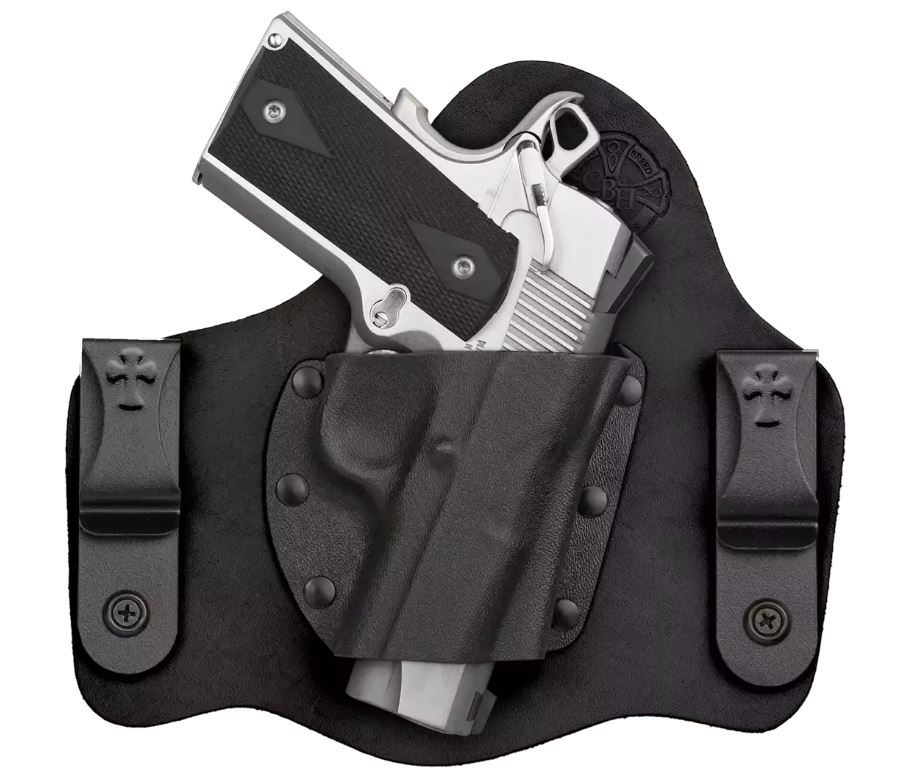
This is the Crossbreed SuperTuck. It obviously does not show a revolver but you get the idea. I have one for my Taurus Spectrum that has just one clip and is more than sufficient for that job.
Anyway, you can check out their holsters for the LCRx .357 here. I have holsters from Bianchi, Safariland, Concealment Express and Bravo Tactical among others. They all do a good job. What you should probably steer away from are the one-size-fits-a-whole-lot-of-guns nylon holsters. I have some of those for just carrying around my homestead but would not trust them in a concealed carry role. The problem is that they try to fit several guns into one holster, so they do none exactly right. One size does not fit all where guns are concerned. Plus, nylon isn’t the best material to build a duty-type or concealed carry holster from, and I consider concealed carry to require duty-level holsters (and guns, for that matter). I trust leather, first, then kydex, second. Each has its advantages, so without hijacking this review and turning it into an opus on holsters, just check around and do your homework. There are a lot of good holsters out there — make sure you get a decent one to carry your Ruger in.
Shooting The LCRx
I decided to shoot the LCRx with a couple of basic loads. Given the current ammo situation, I was extremely limited in my ammo selection. I still had some Fiocchi .38 Spl. loads left over from previous reviews, so I tried that. I also had my favorite .357 handload, a Lee 160-grain hardcast semi-wadcutter over 7.1 of Long Shot (excellent all-around powder for handguns, by the way). I clocked both loads. Here are some targets and related info. Neither load showed gilt-edged accuracy but that’s not what this gun is about. It displayed more than enough accuracy for its task. I shot both loads at about 15 yards — it was interesting…
First, the .357 load:
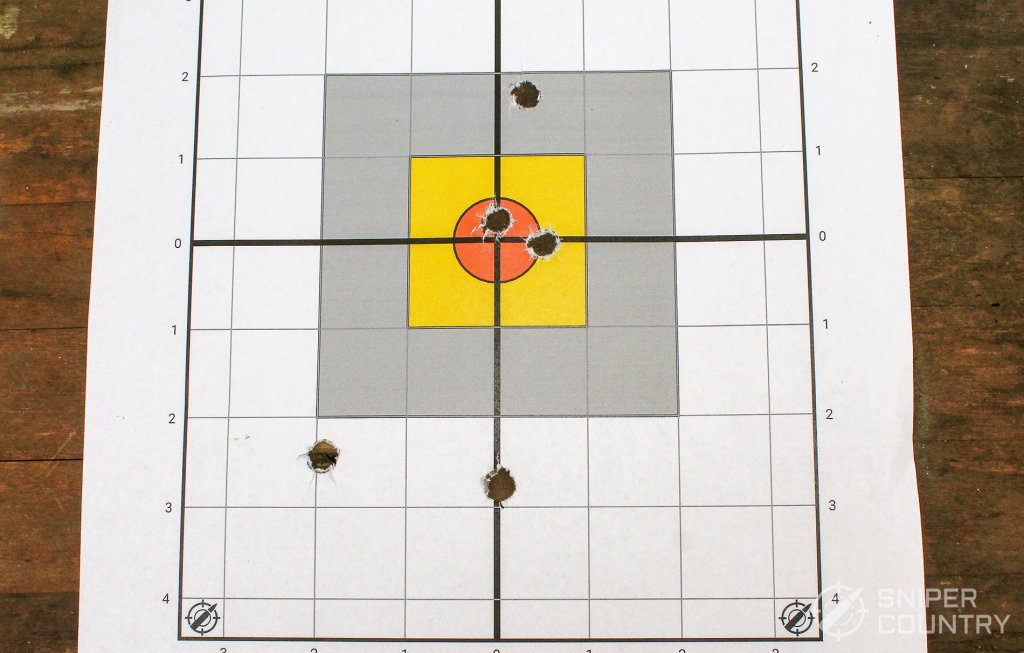
My hard-cast 160-grain semi-wadcutter over 7.1 grains of Long Shot generated 1190 f.p.s. out of the short 3-inch barrel. I was surprised, to say the least. When you get velocity like that, you end up with over 500 ft./lbs. of energy (503, to be exact). That’s some serious power. I have a feeling that, if I had more time, I could get really decent groups with this load. And, if the barrel was one inch longer, the gun and load would be deer-legal in my state. That’s saying something, considering we’re talking about a snub-nosed variant.
Now the .38 Spl. Load:
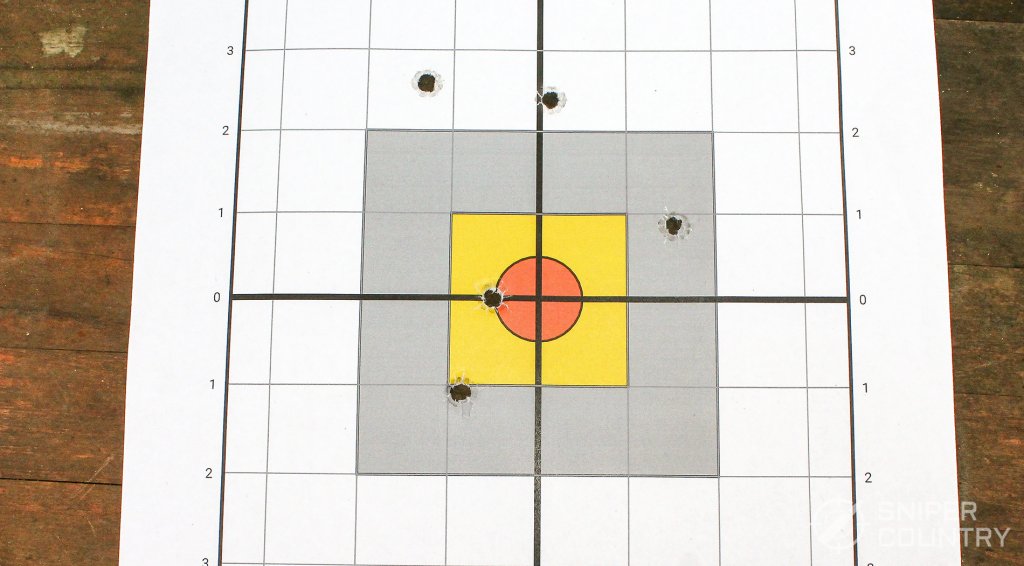
This Fiocchi 158-grain JHP load generated right at 800 f.p.s. out of the Ruger. I was impressed with bullet expansion when I shot the load out of my 2-inch Taurus 85 snubby. Again, I think if I had more time, I could generate a tighter group. I wouldn’t be afraid to carry this gun with this load, even with the relatively-low energy of 225 ft./lbs. Bullet placement, as always, is king.
As far as the sights go, the white bar on the front sight really helped. I did not need to adjust the rear sight — it was good to go. I do need to mention one more thing about shooting a lightweight .357. I had referred, in a previous review, to the sensation of touching off a full-bore .357 load in a lightweight revolver as akin to having a friend whack your outstretched palm with a 2×4. I got a similar sensation with the Ruger, but in all honesty, it was controllable and easy to get back on target. Muzzle flip really wasn’t that bad. So, if you practiced with .38 Spl. +P and then added an effective .357 load to your practice regimen, I would think that you would be well-armed with this gun.

Summary
Would I like to own this 3-inch snubby? You betcha. I think it fills a niche in the revolver market. It isn’t a 2-inch snubby and it isn’t a 4-inch full-size .357 revolver. The 3-inch barrel is the Goldilocks length between the two. You have most of the portability, the concealability, of a 2-inch barrel plus the usefulness of a longer-barreled gun with adjustable sights. In addition to carrying this gun as your concealed-carry weapon, I could also see carrying this when hunting. In my state, .357 handguns are legal for deer but need a minimum 4-inch barrel as I said above. I would carry this gun just as protection from things that might want to hurt me, two- or four-legged. It isn’t unheard of for hunters to get into trouble around here, so any type of protection you can carry would be welcome, especially of the .357-Magnum-variety. Another use I could see for this poly-framed handy little gun would be as a truck or glove-compartment passenger. You could carry this and nobody would have to know it was there, where legal of course. One other use off the top of my head would be as a trapper’s companion. You wouldn’t have to worry about scratching a finely-finished steel gun, given its polymer construction. Also, at 20 ounces or so, it isn’t going to pull your belt down. And lastly, you would have five rounds of .357 that should put down whatever critter is in your trap. These are just thoughts about usage — you will come up with your own, of course. If you own one of these, let us hear from you below and as always, keep ’em in the black and stay safe!
FAQ
The LCR has a enclosed hammer while the LCRx has an exposed hammer.

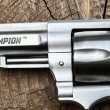
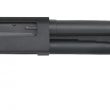


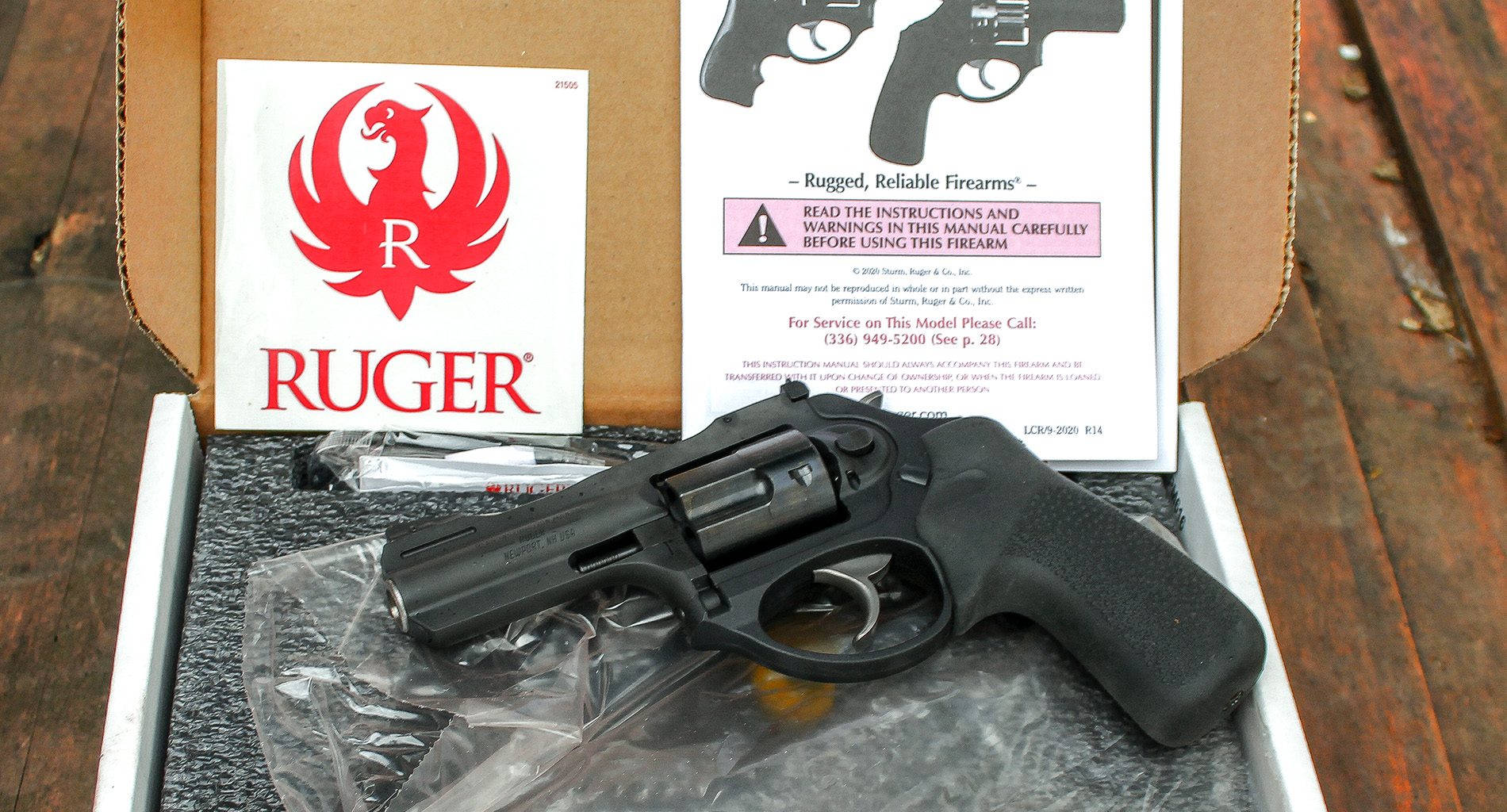
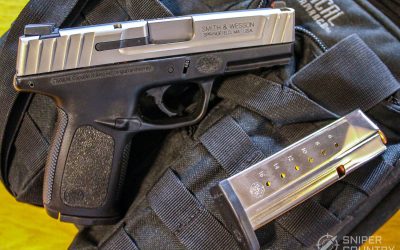

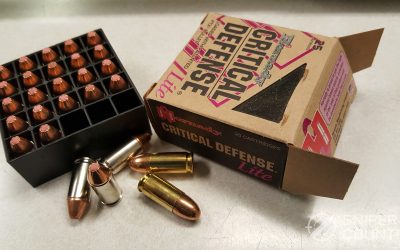

![9mm Glock Models [Ultimate Guide]](https://www.snipercountry.com/wp-content/uploads/2018/10/Glock-17-vs-Glock-19-vs-Glock-26-vs-Glock-41-vs-Glock-43-WM-400x250.jpg)
![Handgun Caliber Chart [2025 Ultimate Guide]](https://www.snipercountry.com/wp-content/uploads/2018/10/Handgun-Caliber-Comparison-400x250.jpg)
![Rifle Calibers [Ultimate Guide]](https://www.snipercountry.com/wp-content/uploads/2018/12/Header-1900-400x250.jpg)

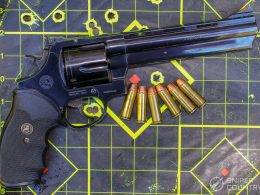
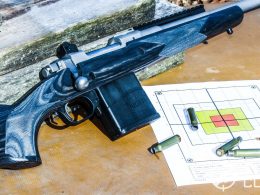
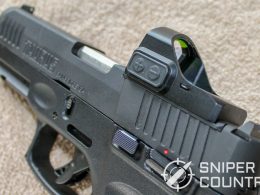
![Best Ruger SR22 Holsters [2021]](https://www.snipercountry.com/wp-content/uploads/2018/06/Best-Ruger-SR22-Holsters-2019-260x195.jpg)
